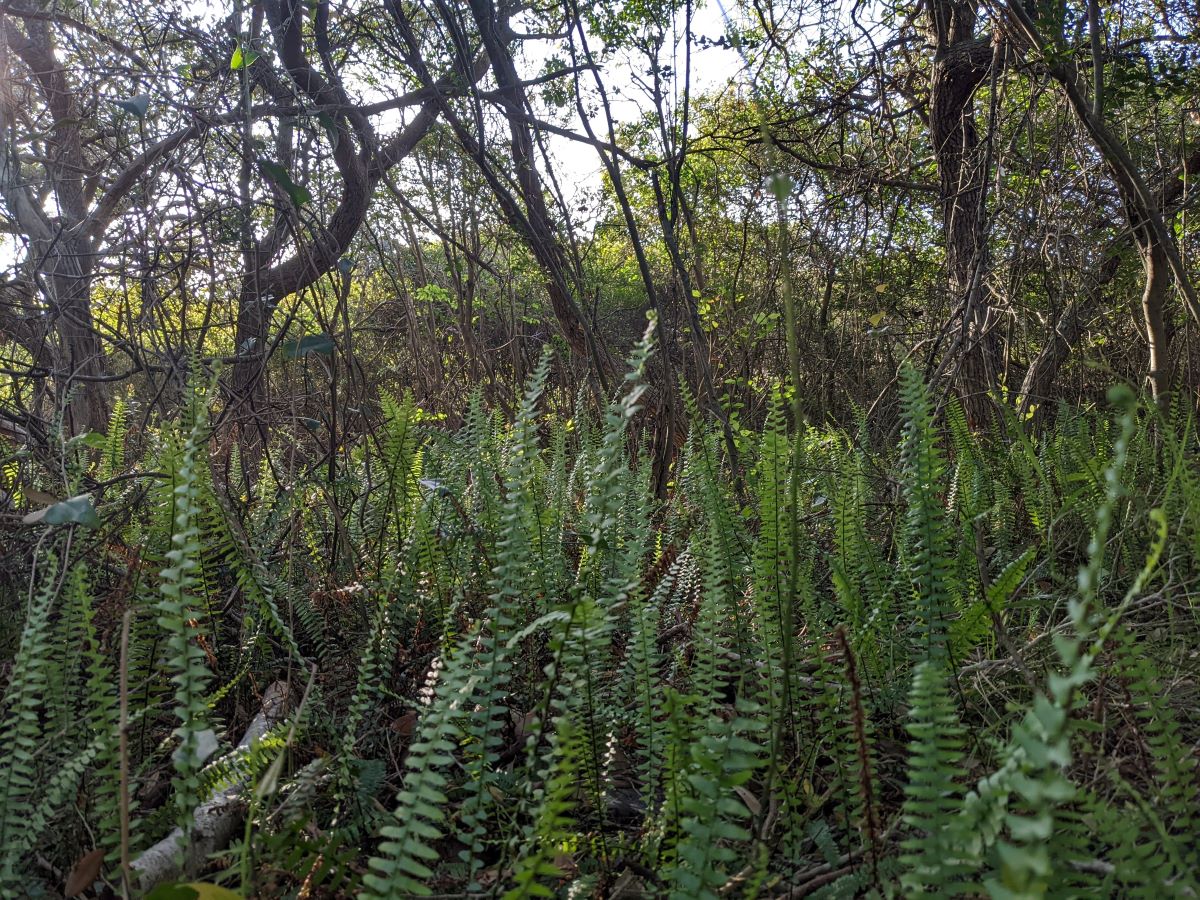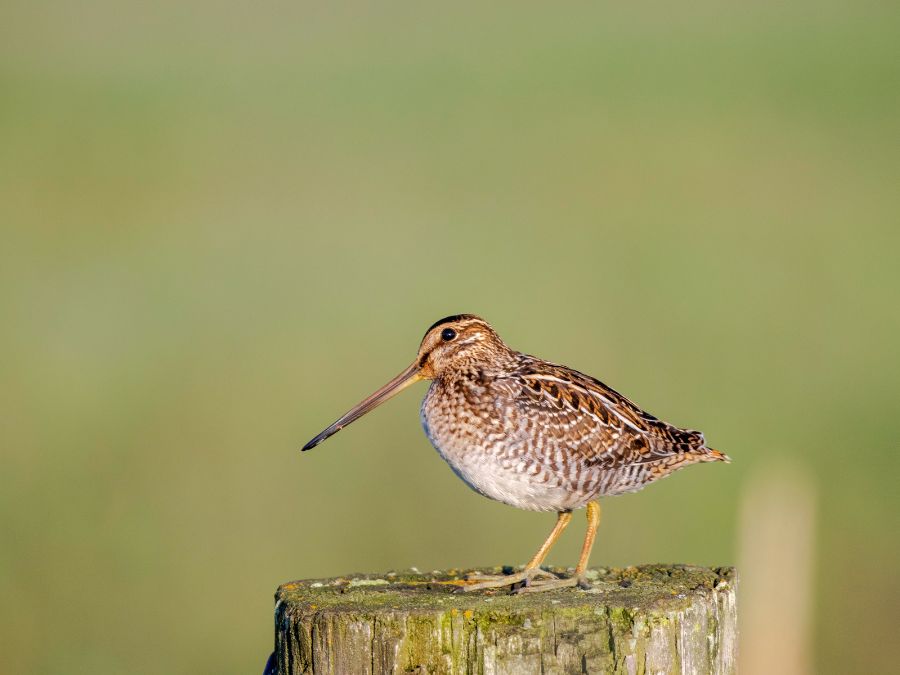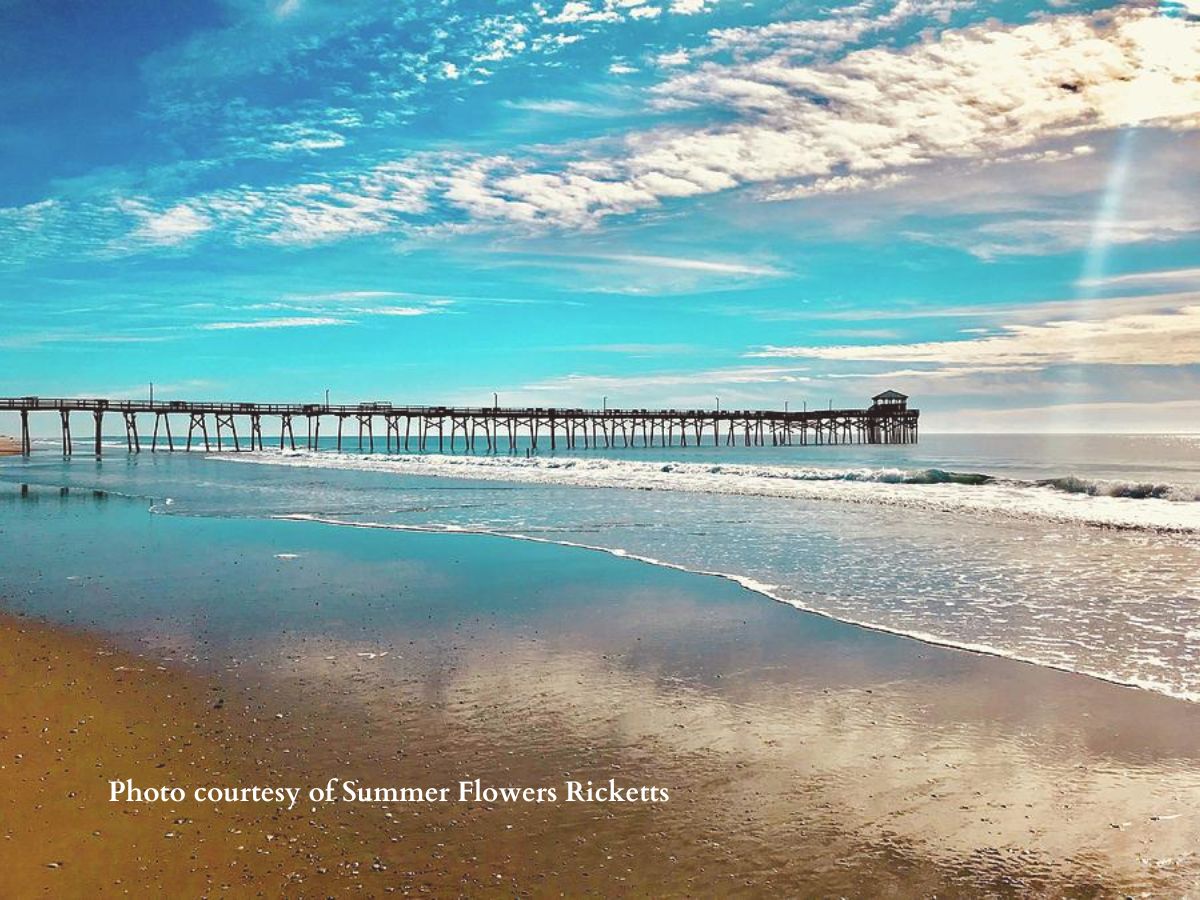Natural Carteret — 5 Min Read
A day at the Fort
By Jessi Waugh
Natural Carteret — 5 Min Read
A day at the Fort
By Jessi Waugh
Do you miss the smell of Christmas? I know where you can get a good whiff of holiday spirit and work on that new year’s resolution to exercise more: Fort Macon State Park.
Though Fort Macon is, in fact, a fort, it is so much more. Fort Macon is the second most visited state park in North Carolina, and it’s easy to see why. You can spend a whole day there and still not experience it all. Good thing it’s open year-round, seven days a week, during daylight hours. There are plenty of opportunities to visit.
Fort Macon was built before the Civil War, on the same site where previous forts had been lost to the elements. Made of brick and stone, it was meant to guard Beaufort Inlet from invasion.
The Fort saw action during the Civil War, when Union troops crossed the sound at Hoop Pole Creek (by the Atlantic Beach Shopping Center) and rolled cannons down the island, opening fire. Confederate troops in the Fort surrendered, and it was Union-occupied throughout the rest of the war. For a compelling local story involving enslaved watermen and the capture of Fort Macon, see David Cecelski’s blog (Cecelski will be at the Bogue Banks Public Library this February).
Fort Macon was active again during WWII. Afterwards, it fell into disrepair, used only by feral goats and locals. In 1924, it became a state park, and the Civilian Conservation Corp built a road, bathhouse, and other improvements from 1934 to 1935, one of many New Deal endeavors to raise the country from the Great Depression. In subsequent decades, facilities were improved and a visitor’s center added.
Parking in front of the Fort, you walk a path through live oaks and junipers to the new museum and visitor’s center. Interactive displays show coastal ecosystems and the work of Elliot Coues (pronounced “cows”), a naturalist stationed at the Fort post-Civil War, who preserved and studied local wildlife. A video plays in a small auditorium. There is also a museum store and bathrooms.
Approaching the Fort, you pass a cistern, cannons, and enter the outer wall along original bricks, crossing the moat over a wooden bridge, into the inner fort. You can walk the empty casement rooms, calling “ooooooo” in the dark, see the original bread oven and cannon ball foundry, enter the officers’ quarters to learn about life at the Fort, or climb steep steps to the cannons and a great view of sea and sound. The outer wall’s rooms are also accessible.
If you’re still feeling frisky, take a hike.

The Coues Trail starts at the parking lot and winds by the fort, continuing for a three mile round-trip through maritime forest, marsh, and dunes. The trail crosses the main road at the Fort Macon bathhouse, where you can take a break at the covered pavilion, picnic benches, or beach. In the summer, there are concessions, but in the winter, bring your own lunch.
But what about the smell of Christmas? I haven’t forgotten; we’re getting there.
As you loop through the dunes back to the fort, you’ll catch the scent of Christmas trees along the path, used to stabilize the dunes and prevent erosion. At the highest point, climb to an overlook where a WWII bunker sinks into the sand, and views stretch for miles, to Cape Lookout and beyond.
At the giant cannons sitting roadside (you’re almost back to the fort!), either call it quits, or walk to the beach, to the rock jetty, and see what the fishermen are catching.
Oh? You like to fish, too? Then pull out the gear, and set up along the jetty or inlet to see what’s biting. You won’t be the only one! Fishing is free with a NC license, but the park closes at dusk, so pack up before the sun sets, and try the Oceanana Pier or Amos Mosquito’s for dinner.
Even if you followed this plan, you didn’t do it all. There are artillery firings, reenactments, nature hikes, astronomy nights, and much more. Check the Fort’s website for a calendar of events, and consider supporting the Friends of Fort Macon, to keep this treasure of the coast shining for years to come.
Do you miss the smell of Christmas? I know where you can get a good whiff of holiday spirit and work on that new year’s resolution to exercise more: Fort Macon State Park.
Though Fort Macon is, in fact, a fort, it is so much more. Fort Macon is the second most visited state park in North Carolina, and it’s easy to see why. You can spend a whole day there and still not experience it all. Good thing it’s open year-round, seven days a week, during daylight hours. There are plenty of opportunities to visit.
Fort Macon was built before the Civil War, on the same site where previous forts had been lost to the elements. Made of brick and stone, it was meant to guard Beaufort Inlet from invasion.
The Fort saw action during the Civil War, when Union troops crossed the sound at Hoop Pole Creek (by the Atlantic Beach Shopping Center) and rolled cannons down the island, opening fire. Confederate troops in the Fort surrendered, and it was Union-occupied throughout the rest of the war. For a compelling local story involving enslaved watermen and the capture of Fort Macon, see David Cecelski’s blog (Cecelski will be at the Bogue Banks Public Library this February).
Fort Macon was active again during WWII. Afterwards, it fell into disrepair, used only by feral goats and locals. In 1924, it became a state park, and the Civilian Conservation Corp built a road, bathhouse, and other improvements from 1934 to 1935, one of many New Deal endeavors to raise the country from the Great Depression. In subsequent decades, facilities were improved and a visitor’s center added.
Parking in front of the Fort, you walk a path through live oaks and junipers to the new museum and visitor’s center. Interactive displays show coastal ecosystems and the work of Elliot Coues (pronounced “cows”), a naturalist stationed at the Fort post-Civil War, who preserved and studied local wildlife. A video plays in a small auditorium. There is also a museum store and bathrooms.
Approaching the Fort, you pass a cistern, cannons, and enter the outer wall along original bricks, crossing the moat over a wooden bridge, into the inner fort. You can walk the empty casement rooms, calling “ooooooo” in the dark, see the original bread oven and cannon ball foundry, enter the officers’ quarters to learn about life at the Fort, or climb steep steps to the cannons and a great view of sea and sound. The outer wall’s rooms are also accessible.
If you’re still feeling frisky, take a hike.

The Coues Trail starts at the parking lot and winds by the fort, continuing for a three mile round-trip through maritime forest, marsh, and dunes. The trail crosses the main road at the Fort Macon bathhouse, where you can take a break at the covered pavilion, picnic benches, or beach. In the summer, there are concessions, but in the winter, bring your own lunch.
But what about the smell of Christmas? I haven’t forgotten; we’re getting there.
As you loop through the dunes back to the fort, you’ll catch the scent of Christmas trees along the path, used to stabilize the dunes and prevent erosion. At the highest point, climb to an overlook where a WWII bunker sinks into the sand, and views stretch for miles, to Cape Lookout and beyond.
At the giant cannons sitting roadside (you’re almost back to the fort!), either call it quits, or walk to the beach, to the rock jetty, and see what the fishermen are catching.
Oh? You like to fish, too? Then pull out the gear, and set up along the jetty or inlet to see what’s biting. You won’t be the only one! Fishing is free with a NC license, but the park closes at dusk, so pack up before the sun sets, and try the Oceanana Pier or Amos Mosquito’s for dinner.
Even if you followed this plan, you didn’t do it all. There are artillery firings, reenactments, nature hikes, astronomy nights, and much more. Check the Fort’s website for a calendar of events, and consider supporting the Friends of Fort Macon, to keep this treasure of the coast shining for years to come.





Very informative Thank you !
Thank you
They also have great rangers and cool birds there!
I would like to go on one of the birding hikes and learn more about those birds
Ooooh. I wanna go on a birding hike.